Water supply check valve - review of modifications and their
The water check valve is designed to ensure the flow of fluid in only one direction. This device is suitable for any communications and allows you to save water due to the fact that it does not go back, but is delayed in the system. Consider the main types of structures, features of their installation and operation, it is very important to choose the right option for certain conditions.
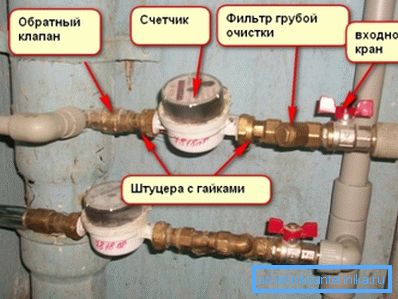
Types of mounting nodes
Many do not understand why a check valve in the water supply system is needed, while its presence is mandatory in systems where water is taken from a well or well. The device helps to maintain a certain pressure in the system and prevents water from leaking even in the event of a power outage. Thanks to the valve, the pump never runs dry, which significantly extends its service life.
The devices differ in different parameters, and the first of them, which should be considered, is the type of fastening, which can be very different:
| Welding or brazing | Here everything is clear and by name - the node is fixed by welding to the pipeline, while it can be from a variety of materials. Naturally, the work cannot be done without welding equipment. |
| Flanges | A flange is a system in which two elements in the form of a disk are bolted along the radius. This option is most in demand in designs of large diameter due to its convenience and simplicity. |
| Couplings | Coupling is used on pipelines of small diameter and is a node with internal threaded connections. This option is most common in private building. |
| Wafer attachment | This option is suitable for flat-shaped products, they are simply clamped between two flanges to connect pipes. For this, you must use bolts of increased length, otherwise the connection is the same as without a valve |
Note! It is necessary to select one or another type of fastening together with the specialist who will carry out the installation. Then you can not go wrong with the mounting option and get the desired.

Types of designs
We figured out why we need a check valve on the water supply system and how it can be mounted in the system, now we will consider the main varieties used in water supply systems most often.
Wafer Valves
Consider the main features of such systems:
- Their main advantages are small size and fairly affordable price.. This option is the most compact, which is especially important in places where there is an acute shortage of space.
- Installation instructions are extremely simple: the element is simply clamped in the fixing unit, the main thing is to put it in the correct position so that the system opens in the direction of flow.
- The main working unit is a pressure disc that holds a spring of a certain stiffness.. Under the pressure of the flow, the system opens, and when it weakens, the spring closes the disk and prevents fluid from flowing out.
- Systems in which there is a probability of water hammer use double-wing mechanisms, with their help a high degree of protection is achieved. The system consists of two semi-circles, fixed on the axis, which are closed in the event of a reverse flow, and in order to mitigate impacts on many mechanisms, shock-absorbing units are provided.
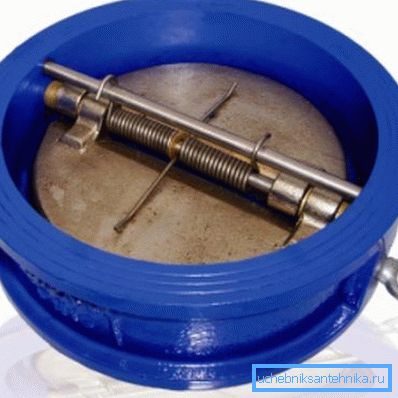
Petal structures
In such systems, the locking node is implemented as follows:
- The main element is a special spool valve, the axis of which is located above the bore. Under the pressure of the flow, the flap rises and the system fills up.
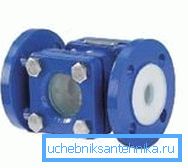
- With a decrease in pressure, the design collapses, which leads to increased wear, so it is better to choose the option with a shock-absorbing system.
- The main advantage of such options is the ability to work in large-diameter pipelines..
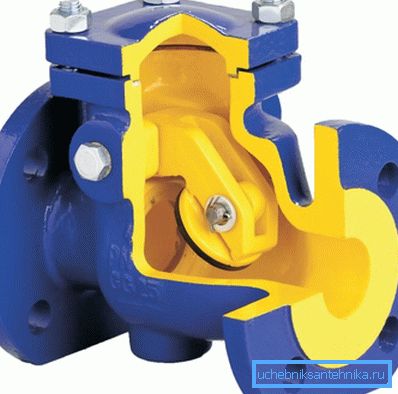
Ball Mechanisms
This option differs from others in the following criteria:
- The system is a node inside which the ball is located., moving in a special inclined cavity.
- The flow can lift the ball, moving only in one direction, when it changes, the ball goes down - and covers the cavity.
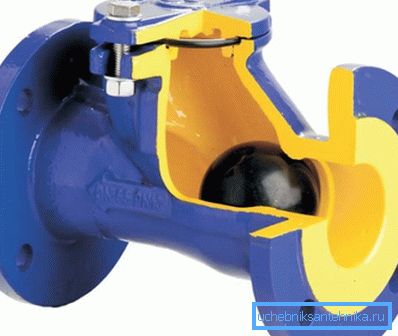
Lift check valves
This type of product is used quite often and works as follows:
- The main element - the lifting valve, moving up and down. With a sufficient pressure of water in the pipes, it rises and allows flow through; when the pressure drops, it falls into the saddle and shuts off the system.
- If you do the installation yourself, remember that the assembly should be located on horizontal sections of the pipeline so that the valve axis is in a strictly vertical position.
Note! The biggest advantage of this option is the ability to repair it without removing the node. That is, you can replace individual parts or clean the system without disassembling the pipeline.
- Remember that this species does not tolerate environments in which mechanical particles and other contaminants are present..
Conclusion
The check valve must be included in the system, it will maintain a constant pressure in the system and eliminate water leakage back. The video in this article will tell some important points and clearly show them.